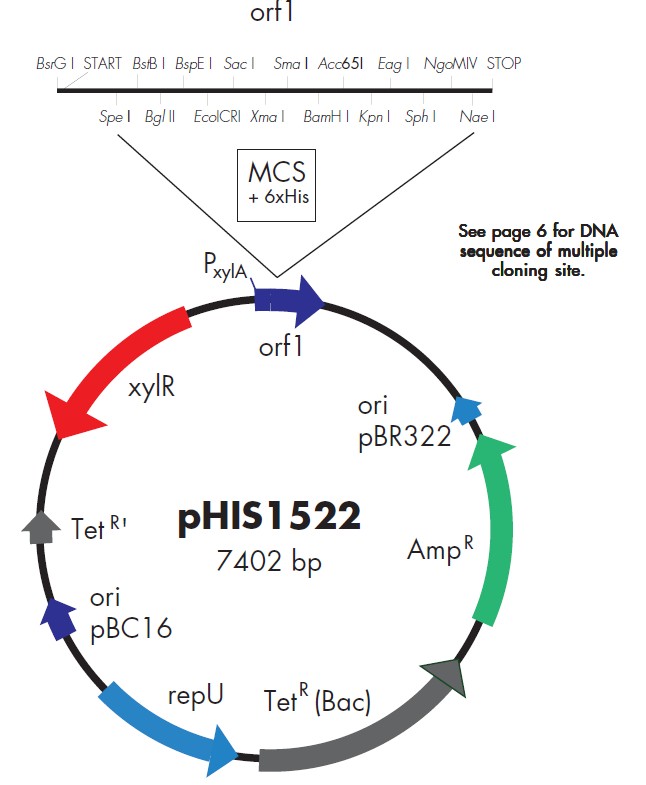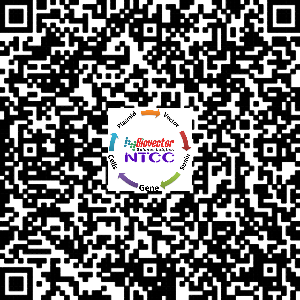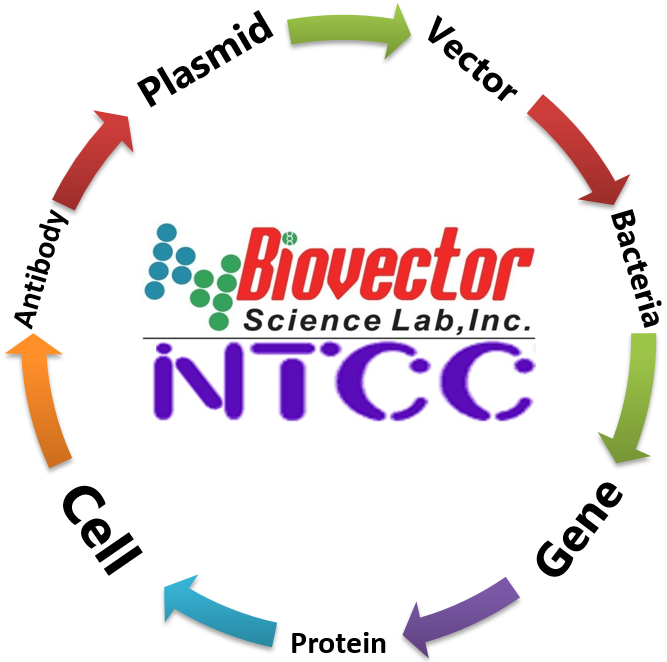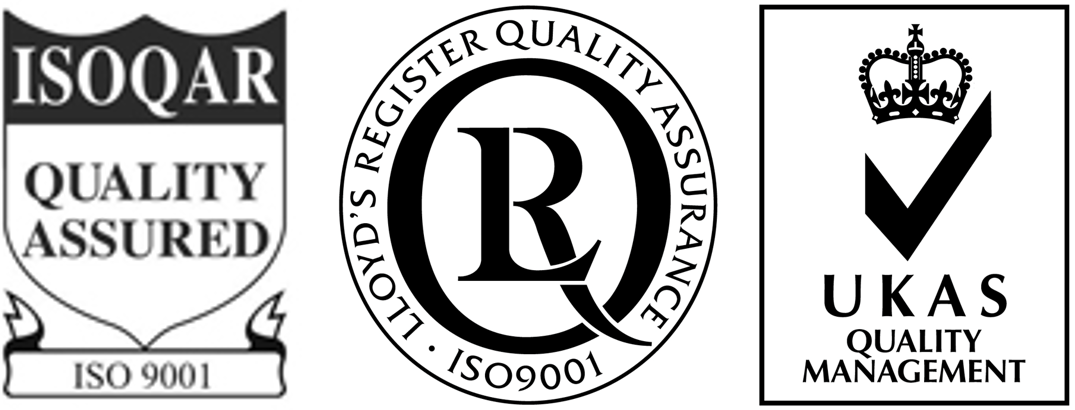| 出品公司: | -- |
|---|---|
| 载体名称: | pHIS1525 |
| 质粒类型: | 巨大芽孢杆菌表达载体 |
| 高拷贝/低拷贝: | -- |
| 启动子: | -- |
| 克隆方法: | 多克隆位点,限制性内切酶 |
| 载体大小: | 7402 bp |
| 5' 测序引物及序列: | -- |
| 3' 测序引物及序列: | -- |
| 载体标签: | 6xHis |
| 载体抗性: | 氨苄青霉素和四环素 |
| 筛选标记: | 四环素 |
| 备注: | -- |
| 产品目录号: | -- |
| 稳定性: | -- |
| 组成型: | -- |
| 病毒/非病毒: | -- |
- BioVector NTCC典型培养物保藏中心
- 联系人:Dr.Xu, Biovector NTCC Inc.
电话:400-800-2947 工作QQ:1843439339 (微信同号)
邮件:Biovector@163.com
手机:18901268599
地址:北京
- 已注册
载体基本信息
载体质粒图谱和多克隆位点信息

载体简介
Plasmids pHIS1522/pHIS1525 both contain the strong xylA promoter (PxylA)originating from Bacillus megaterium. Transcription from this promoter is xyloseinducible (after xylose addition, the xylose repressor coded by the xylR gene onthe plasmids is released from PxylA and transcription is initiated). The mostconvenient cloning sites for insertion of DNA fragments carrying heterologousgenes are located in an open reading frame (orf1) under control of the xyloseinduciblepromoter PxylA (15 unique restriction sites; see sequence). Therefore, anyprotein can be expressed using one out of three functionally different fusionstrategies.A transcriptional fusion requires that the gene of interest carries its own ribosomebinding sequence (RBS) and translation initiation codon. Such a DNA fragmentcan be fused into any of the available restriction sites within orf1. Whether theresulting transcriptional fusion leads to expression of the gene of interest, whichis independent from orf1 expression, depends on the location of the created orf1stop codon with respect to the start codon of the gene of interest. lf these are closetogether, translational coupling may occur, in which the ribosomes translating theorf1 reading frame would terminate at its stop codon, creating a locally highconcentration of ribosomes, so that translation initiation at the new start codonwould be more efficient compared to a construct in which the orf1 translationterminates farther away from the start codon.On the other hand, if the orf1 reading frame continues for a long distance into thereading frame of the gene of interest, the ribosomes translating the created orf1fusion protein might inhibit initiation of translation of the protein of interest.Therefore, it is advisable to pay attention to placement of a stop codon whenconstructing the gene fusion. Taken together, although a transcriptional or operonfusion is constructed, the efficient translation of the orf1 reading frame, and anyfusion thereof created by the insertion, is likely to, positively or negatively,influence the translation efficiency of the gene of interest.Alternatively, a truncated version of the gene of interest, lacking its own startcodon, may be fused in frame to the orf1 reading frame on pHIS1522/pHIS1525to create a translational or protein fusion. This will result in expression of a chimericprotein consisting of up to 18 amino acids specified by the orf1 encodingsequence, followed by the sequence encoded by the gene of interest.Using the BsrGI restriction site directly before the ATG start codon enables cloningwithout changing the N-terminus of the protein of interest. pHIS1525 contains asequence encoding the B. subtilis extracellular esterase (LipA) and allows cloningof target genes directly after the signal peptidase restriction site using the Kas I,Nar I, or SfoI restriction sites.It is important to note that the multiple cloning site and its reading frame areidentical in pHIS1522 and pHIS1525 starting from BglII. Hence, a parallelcloning strategy of the gene of interest in pHIS1522 for intracellular and inpHIS1525 for extracellular production is possible. The 6xHis sequence upstreamthe MCS allows convenient purification and detection of the expressed Histaggedtarget proteins. For expression of target proteins without a 6xHis tag,suitable plasmid constructs (pMM1522 & pMM1525) are also available.您正在向 biovector.net 发送关于产品 pHIS1525质粒载体图谱序列抗性说明书价格Biovector公司 的询问
- 公告/新闻




